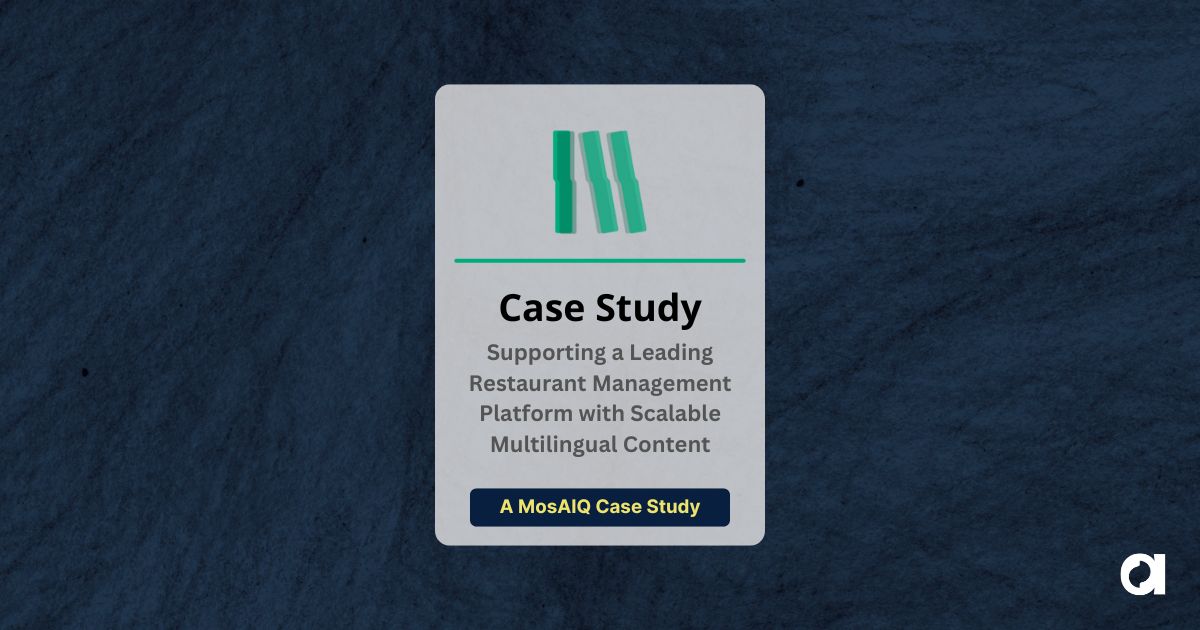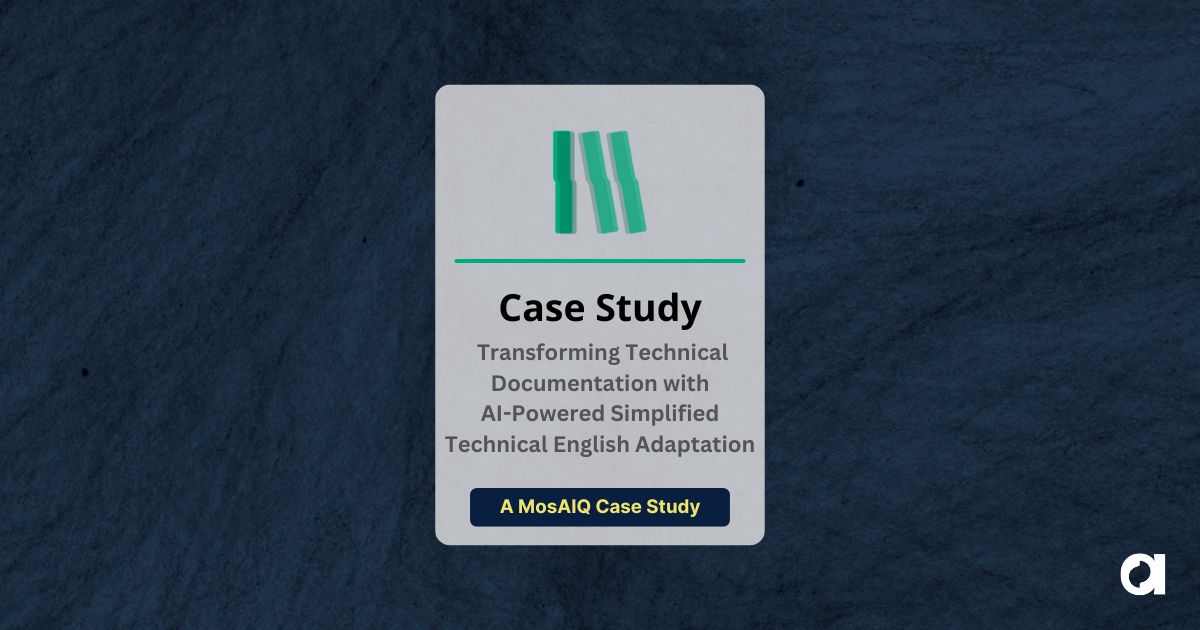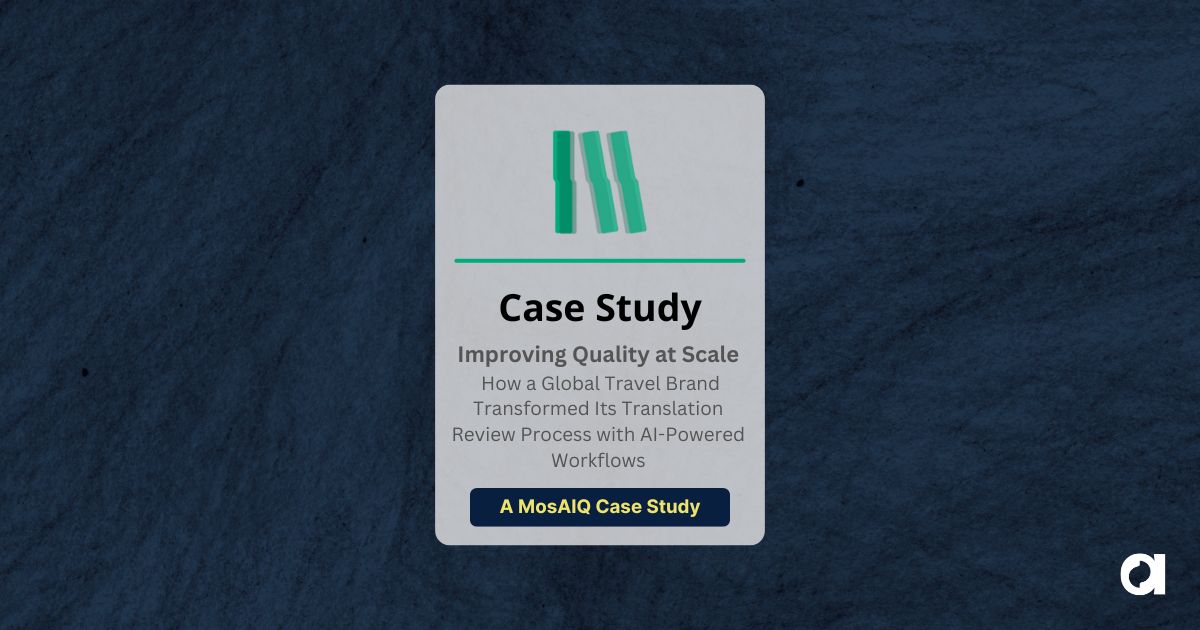Fall is typically conference season in the language services industry. The 2024 conference circuit has been unlike any other in recent memory, particularly rich in learnings and inspiration. Perhaps it is because the GenAI-generated momentum — or hype, depending on your point of view — of the past two years has been building up to this moment.
A significant fork in the road looms for all industries: Double down on AI as a transformational force or double down on AI and ensure that no one is left behind in the transformation. Witnessing professionals’ testimonies at the varied conferences, it truly feels like we are on the cusp of mastering a new technological advancement, at least in its current LLM-driven form. However, significant work remains in the areas of ethics, sustainability, and accessibility.
We are compiling the highlights of some of the major language industry events of the past two months, such as LocWorld, Translating Europe Forum, Languages & the Media, Language Intelligence 2024, and NTIF — each with a slightly different audience but all with a very AI-and-humans-focused program. Read on for our three main takeaways on the state of the language industry as we get closer to flipping the calendar to a new year.
#1: The industry is finding the answer(s) to AI
AI is the go-to headline of trade shows and the main topic of 1-to-1 watercooler chats. It is seen as the one big challenge defining the current period in the language services industry. It is also a profoundly polarizing topic, with all voices on the spectrum between proponents and naysayers making themselves heard, and creating a diverse — and essential — debate. Let’s recap where we are with AI today.
AI is complex, but people are making it work
GenAI works and its use cases for language services now number in the dozens (we cover the most common ones in our State of AI in Localization report). Experimentation continues apace, with the different sides — tech developers, language service providers, and academics — researching new, innovative use cases for the ultimate benefit of the end-users. For example, using AI to caption movie scores for the Deaf and Hard of Hearing (or D/HH) community as showcased by Vilelmini Sosoni and Renata Dalianoudi at the Languages & the Media conference in Budapest.
Companies are presenting the results of their hands-on experiments with GenAI. What stands out is that the current version of the technology produces the best output when combined with human expertise, i.e., humans post-editing AI-generated content. This is likely a function of traditional content creation and translation processes being very human-oriented, and it takes time to shift established paradigms. But it is also a recognition that we have not reached a point where we trust the machine and its output without varying levels of supervision or validation. We will revisit the human-AI symbiosis in a moment.
Public demonstrations of relative successes and experiments do not necessarily tell the story of complexity nor show the hidden cost of AI. From computational resources to institutional knowledge to energy to product/tech stack fit to regulation, there are many requirements and obstacles to navigate, which, for now, nudge AI deployment toward niche territory (as opposed to industrial-scale adoption, although this is starting to appear in a select few companies). Compared to NMT, which is now broadly embedded in the industry, we are likely 18-36 months from GenAI reaching the same levels of adoption and quality — although GenAI’s impact is already being felt.
Attitudes matter
There is a broad consensus that today is the time to be bold and experiment with GenAI: Companies, teams, and individuals are building up precious knowledge by putting the technology to the test, revising their setup, innovating tried-and-tested processes, and creating solutions for situations where conventional localization was too cost-prohibitive, and where AI is fit for purpose (e.g., TM cleanup or AI dubbing, among others).
We touched on this previously (see the State of AI in Localization report). Still, it is worth reiterating as we see this echoed across the spectrum of professionals engaging with AI and reporting on their experiences: The attitude you adopt toward AI — namely, proactivity and curiosity — will invariably lead to positive outcomes. AI is not merely ”forced” on us; we have a much more active role in experimenting, learning about it, using it responsibly, and holding system creators accountable so AI-powered solutions keep improving for the benefit of all.
Innovation continues apace
AI has tremendous potential as a tool to increase the accessibility of content. Notwithstanding the latent issues of AI underserving long-tail or rare languages (they are being actively researched and solutions are in the works), the technology holds promise as a game changer that enables access to content to wider communities. The opportunity seems the biggest in direct-to-consumer industries such as media and entertainment, where the Netflixes, Riot Games, and BBCs of the world are betting on technology to allow them to do more and, equally importantly, to do it meaningfully.
In the meantime, AI-centric innovation by tech and service providers continues unabated. Almost every week, there is a new announcement about a new tool or breakthrough feature being added to the already rich language technology landscape. A few weeks ago, Translated made a splash with their announcement of Lara. DeepL followed that up by unveiling DeepL Voice, its voice-to-text service. At Argos, too, we are hard at work to give customers tools to leverage the power of data and AI — our recently announced Argos SmartSuite is just the first step on our journey to offer tech-augmented services to our audiences.
#2: Humans will coexist with AI
Whether you call it human-in-the-loop, human-at-the-core, or human-in-the-cockpit (as proposed by RWS’ Marina Pantcheva during the excellent keynote at the Translating Europe Forum in Brussels), humans are stomping their foot and showing that AI, in its current form, cannot exist without humans. Yes, AI can lead to cost optimization and efficiencies. Still, the ever-expanding body of research and experimentation shows that humans create impactful content way better than machines. And so, industry opinions converge on humans needing to find ways to coexist with AI. Let’s unpack what this means for today and the future.
The industry is slowly settling into the new (or updated) reality, with GenAI on the way to becoming a regular landscape feature. The AI genie is out of the bottle, and there’s no going back. The predominant paradigm (or the one with the most positive resonance and gaining traction among professionals) is one of humans seeking ways to make the most of what the new technology offers while safeguarding fellow humans’ roles and the value they bring to the content creation and translation process.
Impact (still) comes from humans
Experiments show that AI does have a place in localization operations and that the most impactful and meaningful content comes from humans being involved in the translation and localization process (also see the article by Michael Levot of Canva in the Global Ambitions: Windows Into the Future publication). These are not mutually exclusive statements. The future is made of companies and teams harnessing AI’s transformative potential to scale and automate, and strategically employing human faculties of creativity, ingenuity, and empathy to create memorable user experiences.
There is still room for AI to improve and expand within the confines of localization operations. For example, 2025 should see more talk about AI agentic workflows. As the presence of AI in localization continues to expand, the need for human expertise stands out in stark contrast. Humans may ultimately cease being the working bees translating words (indeed, one of the potential futures ahead of us) and instead move to strategic roles of guiding clients through technological adoption and helping to build the necessary guardrails for AI’s safe and responsible use. At Argos, we already pivoted to this future, supporting our clients with knowledge and technology to face the AI (r)evolution.
#3: It is (also) about the end-user in the loop
We are seeing AI technology impact the organization of localization professionals’ work AND the communities consuming the content that our industry produces. While part of the industry discourse will invariably focus on the benefits of AI for businesses, let us not forget that we, the localization professionals, do our work for the ultimate benefit of the end-user. Several talks at recent conferences focused on the end-user perspective.
Localization and accessibility go hand in hand
The media industry perhaps has a leg-up on others when integrating content accessibility practices. Two observations emerge:
- Significant populations, numbering in the hundreds of millions, do not have access to content due to unequal access to technology platforms or the internet, limited proficiency in English, or disabilities preventing them from enjoying it, such as the D/HH or visually impaired communities. Here, remarkable work is being done in areas such as audio description or captioning to enable equal access to content (although you could say that these are not necessarily novel practices).
- AI-powered technology, such as that used for AI dubbing, has tremendous potential to bridge the language and accessibility gap. The media industry has to contend with the reality of too much production in English and an insufficient budget to port it over to other languages. Here, besides opening up new content to new audiences, AI can also help create new work for language professionals (think “post-listeners,” a new term proposed at the Languages & the Media conference that is close to its cousin “post-editor”).
User-centric localization for more impactful results
Examples from companies such as Canva, Adobe, Gitlab, and Pinterest show that localization and globalization remain most impactful when product development interfaces (or integrates) closely with disciplines such as user research. The natural link between localization and understanding the needs and preferences of global users remains as unbreakable as ever and will not be easily supplanted by AI technology. Doubling down on activities that tap into the feedback from the company’s global audiences to inform product design choices and localization strategies is a tried-and-tested path to growth.
Argos’ research into consumer preferences shows that humans prefer human-created content to machine-generated output. Humans care for other humans, especially when parts of the AI discourse pit humans against machines. One immediate takeaway is that companies would do well to calibrate their approach toward AI or downright invest in user research to understand audience preferences before deciding on technology applications. For more, read the article “Escape the Trap of Self-Centeredness: The End-User Point of View” in Global Ambitions: Windows Into the Future.)
Learning to ask the right questions
The future of the language services industry is exciting but not without its challenges. For one, there is more work to do as AI continues to infuse traditional processes, and navigating rapid technology developments requires us to ask critical questions about ethics, sustainability, and the cost of doing business in the AI world. GenAI has been in our lives for two years, and we are still only scratching the surface of its potential to transform language services and content generation. There are many questions still left unanswered.
And so, as we collectively look ahead, let’s focus on learning to formulate the right questions that will keep our industry moving forward.
 Argos Multilingual
3 min. read
Argos Multilingual
3 min. read
San Francisco (CA), December 6, 2024 Argos Multilingual, a global content solutions market leader, has made public the free AI Maturity Model Assessment, an instrument that helps clients navigate the ongoing AI (r)evolution by assessing their current state of AI readiness and identifying areas of growth and progression. Argos’ research and experience helping clients shows […]

 Argos Multilingual
5 min. read
Argos Multilingual
5 min. read
It takes a lot of time, sweat, and ingenuity to keep motor vehicles on the right track. It’s not much different when it comes to the technical manuals that help service teams diagnose, maintain, and repair those vehicles. With every new market, automobile manufacturers face a maze of different regulations, technical standards, and languages—and that’s […]












